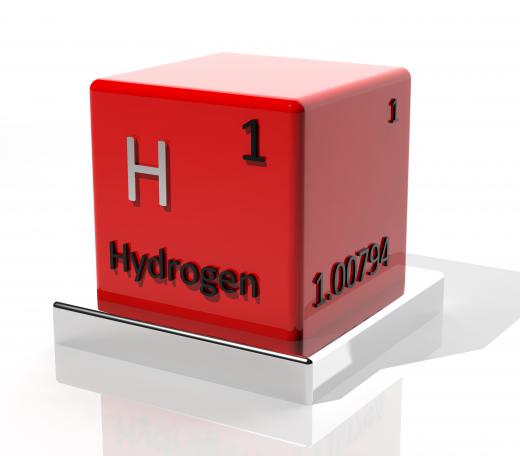What is the Bohr Radius?
The Bohr radius is a unit of measurement used in atomic physics to describe the smallest possible radius of an electron orbiting the nucleus in a hydrogen atom. It was developed by Niels Bohr, based on his model of atomic structure, which was introduced in 1913. The value of the Bohr radius is calculated to be approximately 0.53 angstroms.
In his model of an atom, Niels Bohr theorized that electrons follow specific circular orbits around the central nucleus, held in place by electrostatic force. This model later proved to be incorrect and is now considered far too simple a description of atomic structure. Current theories describe the location of electrons in terms of spherical probability zones, known as shells. The Bohr radius is still considered useful in physics, however, as it continues to provide a physical measurement for the smallest radius an electron can have. Physics students often learn Bohr’s model and equations first, as an introduction before moving on to more complicated and accurate models.

Hydrogen, with only one electron, is the simplest of all atoms, which is why the Bohr radius is based on it. Bohr’s model explains that the orbit of an electron can vary depending on the amount of energy it has. The Bohr radius estimates the orbit of the hydrogen electron while it is in its ground state, or at lowest energy.
There are several factors used to calculate the Bohr radius. The reduced Planck’s constant, a physical constant used in quantum mechanics, is divided by several other units. These include the mass of the electron, the speed of light in a vacuum, and the fine structure constant, which is another physical constant used in physics.
One factor that is not accounted for by the Bohr radius equation is reduced mass, which refers to systems where two or more particles are exerting force on each other. When the radius is used as a constant in equations referring to more complex atoms, this makes sense and is actually more convenient. This is due to the fact that the reduced mass correction would need to be different from the one required for hydrogen, and including it would make the adjustment more complicated. It does skew the measurement of the hydrogen atom’s radius slightly, however. In order to calculate it more accurately, there is a second formula involving the Compton wavelength of the proton and electron of the atom.
AS FEATURED ON:
AS FEATURED ON:











Discussion Comments
We are learning about the Bohr radius in class now. The electrons are actually part of how the elements are grouped on the periodic table.
I'm not sure I completely understand all of it yet, but the electron shells can have either 2, 6, 10, or 14 electrons in them.
If you look at the periodic table, that is how the groups are broken up. On the left, there are periods 1 and 2. Across from that there are periods 13-18 (6). Then you have the middle section with metals that have 10, and the special series at the bottom have 14 elements.
It is really interesting to see how the periodic table fits together once you know what is going on. That's not to mention that when the periodic table was made they didn't even understand electrons!
@JimmyT - I've forgotten a lot of what I learned in chemistry, but I still kind of remember this stuff. The Bohr radius is important because it gives us an idea of how excited an atom is. Even though Bohr was wrong about the electrons having a certain orbit, he was right that electrons have specified distances from the nucleus.
The article briefly mentions it, but electrons have different shells. When they get excited by electricity or something, they jump to a higher shell, and some of the electrons escape. The example we learned in class was just a light bulb. Without electricity, the electrons are in their base state. When you turn the light on, the electricity forces some of the electrons to shoot away from the atoms, and that is the light you see.
What is the practical purpose of knowing about the Bohr radius? If the electrons are always changing position like the article mentions, why would someone need to know the Bohr radius of hydrogen, for example?
Also, how did Bohr even discover this in the early 1900s? What kind of technology did he have to use? I know no microscope can look directly at electrons, but back then, he wouldn't have even had access to scanning electron microscopes like we have today.
Post your comments